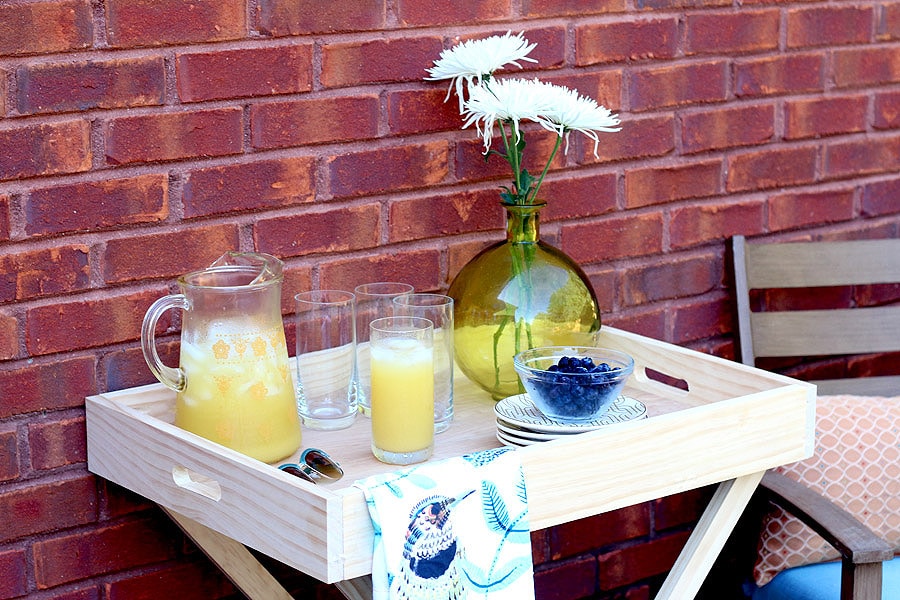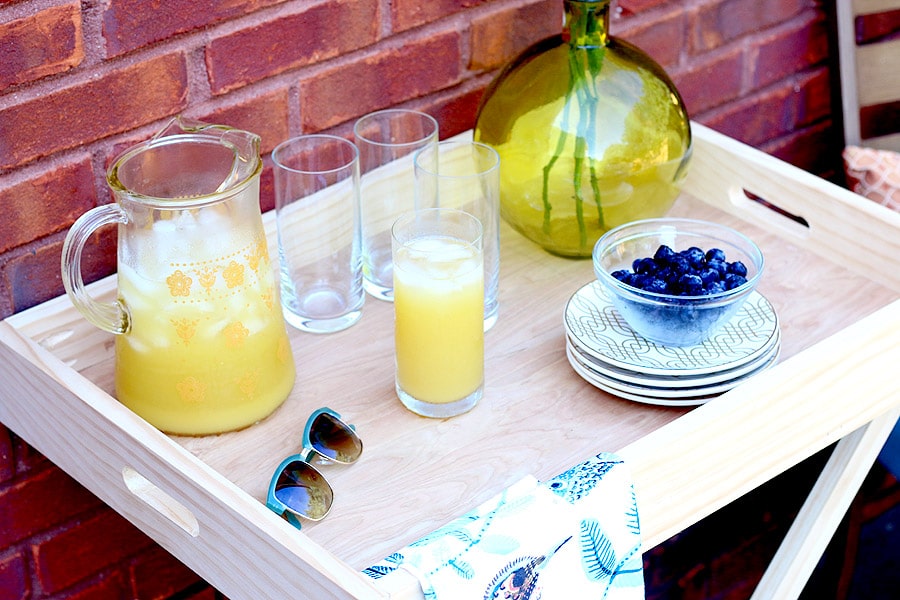Hi friends! Welp. We made it safely to our next duty station but we are still digging ourselves out of a mountain of cardboard boxes. In fact, we’re considering moving out of this house, into the 5-bedroom/3-bath cardboard mansion that we’ve constructed in our front yard. The neighbors love us already, I can tell.
When Aniko from Place of My Taste invited me to join her on this fun West Elm Knockoff Decor Series, I was thrilled to take a break from unpacking boxes and get back to making sawdust. Is it any surprise that the first room I unpacked was the garage (aka my workshop)? #buildersgonnabuild
This is a summer-long series where I, along with four other bloggers will be bringing you a new West Elm-inspired DIY project each month! I am honored to be in such great company. Check out this stellar lineup:
For this month’s challenge, we each chose a West Elm outdoor item to knock off. Here’s what we came up with:
- Corey, Tiny Sidekick | Wooden Plant Stands
- Aniko, Place Of My Taste | Striped Pouf
- Chelsea, Making Home Base | Wood Slat Bench
- Jen, The House of Wood | Butler Stand
- Ursula, Home Made By Carmona | Slab Bench
Today, I’m sharing the tutorial on how to build this DIY Butler Stand, inspired by West Elm’s Jardine Butler Stand.
HOW TO BUILD A WEST ELM-INSPIRED BUTLER TABLE
I’ve drawn up the plans for you so you can build it yourself!
Download the PDF plans for the DIY Butler Stand here.

First, I cut four 1×2 boards for the legs, cutting the ends at a 45º angle. Then I drilled a hole in the middle, clamping two of the legs together to ensure a uniform hole. Since I needed the legs to swing open and closed, I chose to use connecting bolts, connecting cap nuts, and washers to attach the X pieces together. The connecting bolt goes through one side, with a washer in between, and a cap nut on the other side. Next, I drilled a hole for the dowels to sit in using a 3/4″ spade bit.


When I’m using pocket hole joinery, I use this Kreg pocket hole jig to drill my pocket holes.

Also, don’t make the same mistake I did: cut out the handles before you construct the tray. Doh!

I love how roomy this butler table is – it’s much larger than I expected and it neatly folds away when not in use.



Are you Instagram, Facebook, or Pinterest? If you build this butler table, be sure to tag me @jenwoodhouse #jenwoodhouse #houseofwood so I can check it out!
And don’t forget to take a peek at my blogging buddies’ inspiring projects too. We’ll be back this time next month to share a new West Elm-inspired project with you!
- Corey, Tiny Sidekick | Wooden Plant Stands
- Aniko, Place Of My Taste | Striped Pouf
- Chelsea, Making Home Base | Wood Slat Bench
- Jen, The House of Wood | Butler Stand
- Ursula, Home Made By Carmona | Slab Bench
















You are so good Jen! I was eying this butler stand myself but if I DIYed it, it wouldn’t have looked anything like this! Thanks for sharing your plans! I can’t wait to try it! Beautiful job, friend!
That is one hardcore project! Alright, a girl after my own heart…one who builds! 🙂 This turned out amazingly! I absolutely love it!
Wow! You make this look really doable and I love how it turned out! I agree, it is one of those things that is great indoors or out! So happy to be doing this series with you ladies!
Oh my! This project turned out fantastic, Jen! Just like every one of them that you do-ha:-) I am so jealous of your skills!! Thanks for being part of this fun series!
Wow, I love this!!! Looks amazing, thanks for the inspiration 🙂
This table looks fantastic! I love how you didn’t stain the wood. It really looks nice natural.
What – other than the friction of the surface on which it sits – stops the stand from falling all the way open? I imagine the lip of the tray’s bottom will act as an impediment when it sits atop the stand. However, when the tray is lifted off, why doesn’t it scissor open all the way? That is, if it were to sit on a very smooth surface (e.g. hardwood, marble, etc), & not carpet or concrete, what keeps it from continuing to open until the entirety is parallel with the ground?
Great table and plan. I would like to adapt the plan and build a coffee table about 18” high. The bottom of the table top (where the top of the legs would fit) is 40”. How do I determine how long to make the legs the table top will sit on? Is there a formula to determine the length? Help would be appreciated.
Kind regards
Bob
Please disregard above comment. It’s been a few years since my last geometry class, and I’d forgotten about Pythagorean Theorem.
If you take the tray off it becomes a luggage stand! Double duty! Great work team!